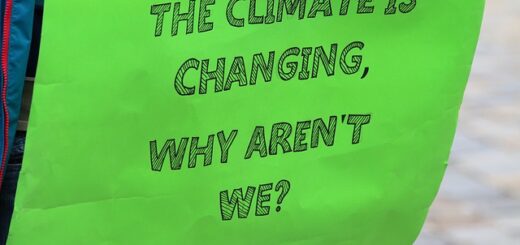Call for Applications: Garissa Camel Value Chain Intervention Implementing Partner, International Labour Organization (ILO)
1. Introduction
The International Labour Organization (ILO) is part of a Partnership on Inclusive Jobs and Education for Host Communities, Refugees and other Forcibly Displaced Persons, known as PROSPECTS. The Partnership is a multi-year programme, funded by the Government of the Netherlands, that brings together five agencies (ILO, World Bank, IFC, UNICEF, UNHCR) to devise collaborative and innovative approaches for inclusive job creation and education in contexts characterized by forced displacement. The programme encompasses three pillars, namely Education, Jobs, and Protection and operates in eight countries across East Africa, Horn of Africa and the Middle East employing an area-based approach, in which the partner agencies jointly focus their activities on selected regions in each country. For Kenya, the partner agencies are working in the refugee hosting Counties of Turkana and Garissa. Under the partnership, the ILO, together with IFC and World Bank, lead interventions to improve livelihoods of host communities and refugees, including through enterprise development and Financial Education. Please find more information on prospects here: www.ilo.org/prospects
2. Context- Garissa county
Kenya has about 1.06 million camels. Camel milk production is estimated at over 340 million liters valued at over KSH 8 billion at the farm level (Musinga et al., 2008). Camels thrive in the harshest of Kenya’s agro-ecological zones and are generally able to withstand the frequent droughts which decimate cattle, goats and sheep populations (KALRO). Camel milk contributes significantly to pastoral households both as a source of nutrition and income, thus playing a vital role in building resilience of households in the ASAL areas.
Garissa County is one of the three counties in the North Eastern region of Kenya, hosting a population of about 480,146 people (2019 National Census) residing in the seven sub Counties of Fafi, Ijara, Dadaab, Garissa, Balambala, Lagdera and Hulugho. Garissa has a land area of 44,753 km² and borders the Republic of Somalia in the East. The County has hosted refugees for over 30 years, with statistics showing that the County presently hosts 234,040 refugees (UNHCR January 2022). The County lies in the arid areas of Kenya, and temperatures are generally high throughout the year and range from 200 C to 380 C. According to the Garissa County Integrated Development Plan (CIDP 2018-2022), only one per cent of the Garissa population own title deeds as majority of the population live on communal land. This has seen increased cases of land related inter-clan conflicts in the recent past consequently leading to loss of human lives.
The total hectare under food crops in the county is 981 Ha while that under cash crop is 1,800 Ha. Livestock rearing is the backbone of the county’s economy. The main livestock bred are cattle (Boran), goats (Galla), sheep (black headed Persian) and camel (dromedary one humped). In 2016, the population of camel was estimated to be 486,000 as documented in the CIDP. Most camel population is found in the drier northern part of the county while other livestock is concentrated in the south. Improving animal health, production and product value chain is also prioritized in the CIDP.
In the pastoral communities, the camel is considered a high value asset with men owning the animals but allowing the women and herders who are usually youth to manage the milk from the animals. The women use the camel milk as a source of protein for the family and as a means to economically empowering themselves. Women are involved in the marketing of camel milk right from milking to primary, secondary aggregation and selling of the milk to the final consumer. While Kenya is the second highest producer of camel milk, the value chain has not been developed and many of the activities are largely informal.
Value chain analysis and sanitary system of camel milk supplying Nairobi City, Kenya. Dishon Mulio et al. Sept. 2018
3. Problem
There are many factors constraining the development of the camel milk subsector. These include low productivity (poor growth rates and high calf mortalities), poor breeding practices and poor nutrition; poor milk handling hygiene leading to high spoilage and poor organization of actors in the chain; poor business orientation of producers; inadequate physical and institutional support infrastructure; and poor market development (KALRO).
The women who are critical to this value chain face challenges of lack of knowledge on good animal husbandry practices, poor quality milk which among others is a result of poor hygiene during milking and storage of the fresh camel milk in plastic containers. Given the high perishability of milk coupled with lack of proper storage (plastic containers are commonly used) and cooling facilities in the rural areas, most of the milk is lost. The limited transportation and poor infrastructure limits access to markets. The low camel milk sales exacerbate the poverty situation for women and further promotes inequality and exclusion of women from benefits of that economic activity. There are barriers to ownership and certain activities within the livestock value chains which lead to exclusion of women especially refugees from participating in camel milk production. The youth in these areas are also excluded from economic activities due to lack of assets, lack of technical skills on milk processing and value addition, weak entrepreneurial skills, and resources to meaningfully engage in significant economic ventures.
4. PROSPECTS Interventions
The employment and decent work pillar under the PROSPECTS programme aims at increasing the number of host community people and refugees with enhanced livelihoods and employment in decent work. Interventions under this pillar will trigger provision of employment services to support transition to work, as well as the labour market demand that is needed to let refugees and host communities transition to various forms of employment, and finally mechanisms to promote enhanced quality of work.
The constraints identified within the camel milk value chain continue to cause low productivity in the sector and minimum benefits to women and youth working in the sector. Poor animal husbandry practices not only affect the quantity of milk produced but also the milk quality. Poor hygiene and handling leads to increased losses due to spoilage but also health risks to consumers. Lack of technical and entrepreneurial skills has contributed to low value addition and reduced incomes from camel milk trade.
ILO envisages several interventions that will spur increase in production, productivity and competitiveness within the camel milk value chain while adopting the use of Employment Intensive Investment Programme (EIIP) approaches to rehabilitate and improve water infrastructure in the camel rich corridor, leading to community led sustainable water supply systems. The interventions would also include market systems development interventions that involve the setting up of service centres at selected water points where the farmers can access inputs, health, collection and cooling facilities and market linkages for their animals and milk products. The interventions will aim at increasing the incomes for women in the camel milk value chain, and support value addition of camel milk. Ultimately, the interventions will contribute to enhancing livelihoods and promoting decent work within the camel milk value chain in Garissa. The intervention will also develop skills of the women and youth through either on the job training ensuring the needed competencies are acquired which will allow the beneficiaries to acquire market relevant skills that will enable them to obtain further employment or start their own businesses after the programme is completed.
The ILO is looking for an implementing partner to support the strengthening of the camel milk value chain in 3 specific locations in Garissa County.
5. The Assignment
5.1 Scope of the assignment
The main goal of the assignment is to reduce poverty, inequality and create decent jobs for over 1200 women and youth through improved productivity in the camel milk value chain in Garissa County.
Specific objectives of the intervention include the following: –
i. Rehabilitation of selected water points using EIIP approaches to increase access to water for livestock and households: The purpose of this objective is to support improvement and protection of identified water points while creating immediate decent jobs and income to the local populations through the infrastructure works within the camel rich sub counties and strengthen community water management systems including skills training for rehabilitation and maintenance of the water points in collaboration with the local TVET institutions.
ii. Establishment of camel milk value chain service centres around the water points: this activity will include organizing camel milk farmers within groups, building their capacity to manage the service centres and providing milk cooling infrastructure using the EIIP approach to at least 3 service centres. Formation and strengthening of cooperatives for women and youth and supporting them to access training, inputs, finance and markets for their products will be considered as a potential strategy to improve the social solidarity economy within the camel milk value chain.
iii. Improvement of camel animal husbandry: The project will identify and train at least 20 Community Animal Health Workers (CAHW) in Good Animal husbandry Practices (GAPs), disease surveillance, management and referral of challenging cases to the veterinary doctors. The CAHWs will be selected from the communities near the water points. They will work with the women and herders to ensure healthy animals and that good quality milk is produced and marketed. The project will work with the relevant Government departments to link the CAHW to certification through the recently rolled out Recognition for Prior Learning programme (RPL).
iv. Support strengthening of at least one private sector milk processing and packaging firm in Garissa. The project will identify and work with at least one milk processor who will collect the milk from the cooling facilities and ensure value addition to the milk to extend its shelf life. The processor will preferably be one with a milk processing facility in Garissa to minimize the distance that the milk must travel before being processed. The processor will be linked to the milk traders and supported to expand the camel milk market beyond Garissa to cities in Kenya. The processor will create the pull for more milk from the traders who in turn will demand for more milk from the milk herders.
v. Project management and quality assurance: the implementing partner will ensure sound project management strategies are implemented, coordinate with Government departments and other stakeholders in the sector, and continuous community participation for ownership and learning.
5.2 Outcomes
a. Improved access to water for the livestock in 3 locations in Garissa County
b. Increased well-being due to the immediate income and skills development from the EIIP works
c. Improved capacity of the County Government and relevant institutions to offer extension services to actors in the value chain.
d. Enhanced capacity of women and youth to produce and market camel milk
e. Empowered women and youth in entrepreneurship, financial education and cooperatives
f. Improved linkages for women and youth to inputs and finance
g. Increased access to markets for milk
h. Conducive business and policy environment for milk production and marketing
5.3 Outputs
a. Rehabilitation of 3 water points using the EIIP approach to improve access to water for the camel milk producers while creating immediate decent jobs. Set up and train the water management committees from the communities near the water points to handle operation and maintenance issues, linking then to local TVET institution for continuous skilling and support.
b. Training of women and youth in good animal husbandry practices including feeding and milking and handling
c. Identification and training of 20 Community Animal Health Workers (CAHW) and capacitating them to support the value chain
d. Construction of 3 milk service centres next to the water points through the EIIP methodology that will provide services to the milk producers such as milk collection and cooling, focal point for member capacity building and provision of animal health services
e. Train 1,200 women and youth in entrepreneurship, financial education and cooperatives development
f. Support the setting up and operations of 3 producer cooperative societies to serve their members by handling the milk collection and marketing. The cooperatives will be trained in how to effectively run the cooperatives and manage the service centres.
g. Link the milk producers to input dealers for them to access quality inputs and financial service providers to access finance
h. Identify and support a camel milk processor and 5 women milk aggregators who will be linked to the milk producers to enhance access to market
i. Coordinate the stakeholders in the camel milk value chain and ensure that there are regular meetings to discuss camel milk value chain issues at least once in 6 months. Work with the county and national government to advocate for a policy for the camel milk production and marketing
5.4 Deliverables and Reporting
1. The strategic implementing partner will be expected to provide a quarterly activity plan and a monthly progress report. The implementation report will capture outputs of the activities implemented, lessons learnt, and challenges experienced. ILO will provide a reporting template to the partner.
2. The strategic implementing partner will involve the ILO PROSPECTS team in all activities for technical support, stakeholder inclusion and quality monitoring.
3. The ILO will monitor implementation of the activities and hold monthly meetings with the partner to review plans and provide technical support.
4. At the end of the implementation period, the strategic implementing partner will provide an end of implementation report, documentation of lessons learnt as well as a financial expenditure report.
5.5 Qualification
The ILO is seeking to collaborate with an organization that suits the criteria below: –
(i) Proven technical expertise in the camel milk or and livestock value chains
(ii) Proven technical expertise in the delivery of community infrastructure, preferably using the labour-based technology. ILO will provide technical capacity for labor based works approaches, and capacity building to the implementing partner.
(iii) Proven technical expertise in market systems development approaches
(iv) Experience in facilitating delivery of business development services, access to finance and cooperatives development.
(v) Presence and or experience in developing partnerships that can deliver interventions in Garissa County and good understanding of the camel milk value chain in Garissa
(vi) Experience and networks within the refugee hosting sub counties of Dadaab and Fafi will be an added advantage.
(vii) Record of accomplishment of successfully implementing value chain projects with high levels of efficiency and integrity.
(viii) Ability to monitor and evaluate the performance of the camel value chain interventions, report and provide knowledge management products on the same
(ix) Has capacity to successfully implement projects of at least USD 500,000 each.
6. Budget
Through PROSPECTS Programme the ILO will initially invest approximately USD. 300,000.00
7. Implementation period
The proposal and budget plan will cover an initial period of 18 months
8. Evaluation criteria
TECHNICAL EVALUATION (85 Marks)
- Submission application and relevant documents
- Understanding of the TOR, precise methodology and demonstrated experience to deliver
- Understanding of the target group
- Concise presentation of strategy, outcomes, outputs, activities and results, monitoring and evaluation framework
- Competent management (qualifications and experience)
- Clear exit strategy with sustainability embedded
FINANCIAL EVALUATION (15 Marks)
- Concise presentation of outputs activities and budgets
- Value for money proposal
- Clear separation of activities to be delivered by implementing partner and activities to be subcontracted
- Precise presentation of the administration costs and operational costs
- Proposed contribution by partner to the project (in kind or co-financing)
TOTAL: 100 Marks
How to Apply
Organizations who meet the above requirements should submit bids, which at minimum should include the following:
- 1. A technical proposal describing how to achieve the project objectives, methodology and work plan, activities/interventions, key staff, expected results, monitoring and evaluation, management structure, risks and mitigation measures (maximum 10 pages)
- 2. Suitability statement, including demonstration of having successfully implemented similar projects before, and experience working in Garissa County.
- 3. A detailed financial proposal including activities and proposed budgets for the stated activities. The potential implementing partner can also mention their additional contribution to the project, whether in kind or co-financing.
- 4. Two reports of similar projects implemented by the potential implementing partner in an ASAL county of Kenya.
Interested organizations should submit their expression of interest a suitability statement, narrative and financial proposals and other supporting documents that show previous experience in similar assignments to E- mail: nboprocurement@ilo.org to reach no later than 5.00 P.M. on Sunday 26th June 2022, Quoting “PROSPECTS: Camel Value Chain Collaboration”







